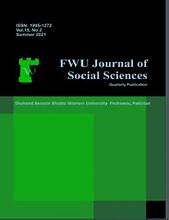Explaining Economic Growth Using Threshold Inflation and Factors from Growth Theories: Empirical Analysis of Pakistan
Abstract
The present study investigates the impact of threshold inflation on economic growth of Pakistan using factors from growth theories. The empirical analysis is based on data from 1973 to 2023. The study used threshold regression to estimate the threshold level of inflation. The estimated threshold levels are 9.3 and 9.6 percent for inflation computed from consumer price index and wholesale price index respectively. The estimates revealed that after reaching the threshold inflation level, labour force growth and trade act as Keynesian theory suggests but the role of money supply contradicts from the Monetarists theory. This study is foremost in using regression trees in the analysis of threshold inflation and growth. The analysis of regression trees indicates that inflation and money supply are the major determinants of the growth of economy. The study concludes inflation above the threshold level of inflation corresponds to very low levels of growth in the country. The study suggests keeping inflation below threshold for the sustainable growth of the country.

